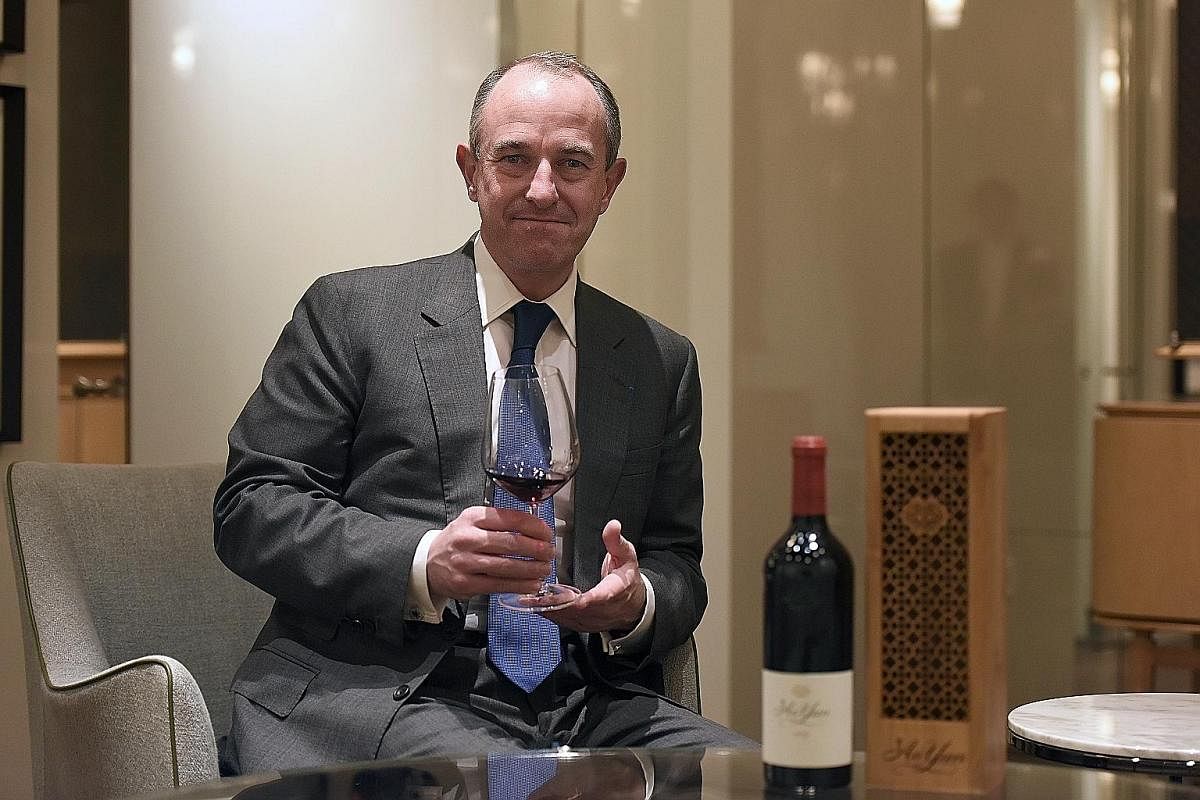Swig
Taste of Shangri-La
Luxury red wine label Ao Yun is produced in the mountainous region of Yunnan

A little bit of Bordeaux can be found in Shangri-La, Yunnan, because of a new wine venture by spirits house Moet Hennessy.
The 28ha vineyard is situated in villages that are 2,200 to 2,600m above sea level in the foothills of the Himalayas.
Under the label Ao Yun, the vineyard produces a red wine that is a blend of Cabernet Sauvignon and Cabernet Franc grapes. Ao Yun means "flying above the clouds" in Chinese and is a reference to the thick rolling clouds shrouding the area at that altitude.
The red wine is described as combining the silkiness of Spanish Ribera del Duero and spiciness and minerality of a Napa Valley Cabernet Sauvignon, coupled with lush aromas of black fruit, olives and hints of bark and mushrooms.
The luxury label is Moet Hennessy's first made-in-China red wine. Moet Hennessy, which is owned by French luxury conglomerate, LVMH, also runs six other wine estates such as Cloudy Bay in New Zealand and Cape Mentelle in Australia.
Mr Jean-Guillaume Prats, president and chief executive of Estates and Wines at Moet Hennessy, says that plans to produce a red wine in China had been in the works since 2010.
The Frenchman says: "A market that consumes fine wines usually produces them too. When you look at the size and potential of the wine market in China, with a new generation of upper-middle class consumers moving from baijiu (Chinese sorghum wines) towards Western-style wines, we have to give China that credibility that it can produce fine wines too."
He was in town last month to launch the debut 2013 vintage of Ao Yun here, five months after it debuted in the United States. About 10 per cent of the 24,000 bottles produced are allocated for the Singapore market. Each 750ml bottle costs about $450 and interested buyers can contact Moet Hennessy directly (call 6838-7740).
To start Ao Yun, Moet Hennessy hired Australian oenologist Tony Jordan to explore suitable wine- growing regions in China.
After three years, he concluded that Shangri-La was the best choice. The mountainous region has a climate that is similar to the French wine region of Bordeaux, in terms of the amount of rainfall and a vast temperature gap between the day and night.
At the high altitude, the grapes bask more intensively in ultra-violet rays from the sun. This "cooks the skin and gives an exceptional acquisition of the phenolic ripeness," Mr Prats says. This means the tannins in the grapes become supple and well-rounded and contribute to a tastier wine.
At night, the temperature drops from 30 to 5 deg C, which helps preserve the acidity in the grapes.
Mr Prats says: "This temperature difference is like taking a ripe fruit from a garden and putting it in a fridge, which gives the fruit more freshness and aromas."
He points out that the harvest period in the Chinese vineyard is longer than those in Bordeaux. In Shangri-La, the vines receive only five to six hours of sunshine daily as they are grown in the shadow of a 7,000m-tall mountain. This lengthens the harvest period to five weeks. In comparison, estates in Bordeaux have a harvest period that ranges from 10 days to two weeks.
Mr Prats says: "It is like slow-cooking food at a lower temperature that brings out the flavours."
Making the wine was fraught with many logistical challenges, he adds.
The production team grappled with bouts of power outage in an area where the nearest amenities are a five-hour drive away. Thus, some of the wine-production processes, such as destemming of grapes, had to be done manually.
The wine also had to be fermented in amphorae that traditionally house baijiu, as temperature-controlled fermentation tanks could not arrive in time due to its far-flung location.
"It is like running a complex project in an offshore oil rig in the Gulf of Mexico that is cut off from the rest of the world," he says. "You need to find people who are willing to put their lives on hold to work there."
He is optimistic that the quality of the 2014 vintage of Ao Yun, which is slated to be released in the middle of this year, will improve with "learning from mistakes and more razor-sharp precision in wine-making processes".
However, he does not plan to increase the production of Ao Yun. "The idea is to remain small and beautiful like a Burgundy estate."
Join ST's Telegram channel and get the latest breaking news delivered to you.
A version of this article appeared in the print edition of The Sunday Times on February 12, 2017, with the headline Taste of Shangri-La. Subscribe

